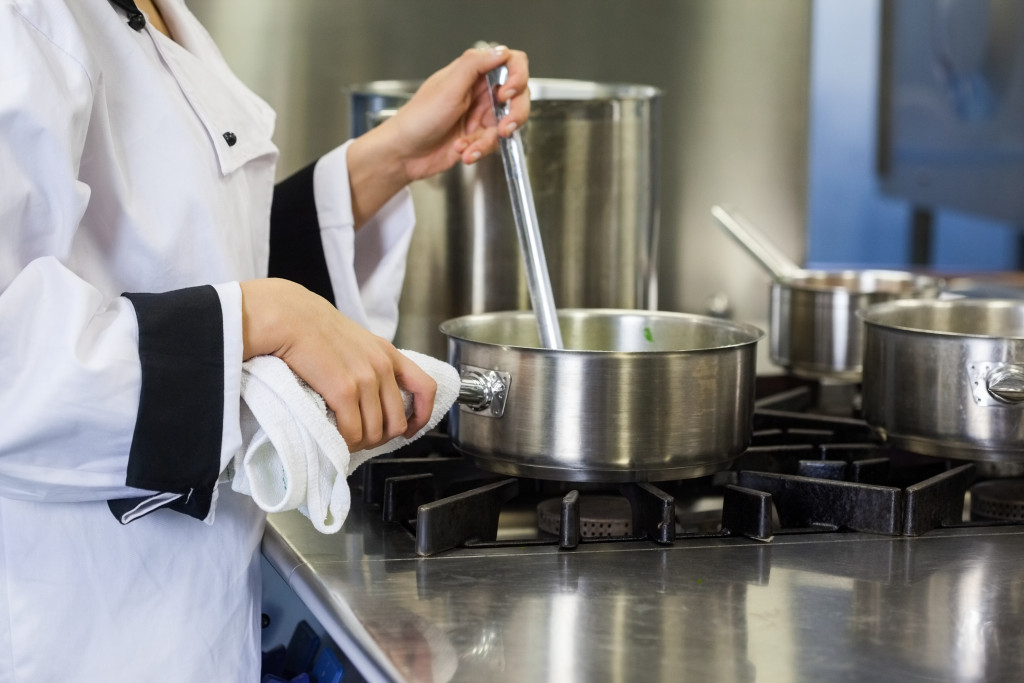Even before the pandemic, dark kitchens, ghost kitchens, and virtual restaurants already existed. Forbes reports that according to the Boston Consulting Group, food delivery had a seven percent share of the restaurant market in 2019. This increased to 20 percent in 2020. Online ordering represented a 10 percent share of all restaurant orders before Covid-19. In 2021, it represented a 28 percent share.
The National Retail Federation (NRF) states that according to data from Hospital Technology, these types of businesses in the United States were already worth $43.1 billion as an industry in 2019. The pandemic has boosted the popularity of delivered food-on-demand, though, and the projection is that by 2027, this industry will be worth $71.4 billion.

Established Restaurants and New Businesses
According to Avanti, virtual restaurants are spin-offs of existing restaurants. Also called delivery-only or cloud restaurants, they use their own kitchens but accept online orders and do deliveries under a different brand. For instance, sister restaurants Maggiano’s and Chili’s branched out to a virtual restaurant called It’s Just Wings, Denny’s created The Melt Down and Burger Den, and Bloomin’ Brands has Tender Shack. The NRF states that Wendy’s intends to launch 700 virtual restaurants in 2025 throughout the U.S., Canada, and the United Kingdom. Sister brands Taco Del Mar and Quiznos intend to launch 100 virtual restaurants in 2022. Forbes Business Council Member Alex Canter expects that by 2025, over half of the existing restaurants will have several other brands operating from their kitchens.
On the other hand, dark kitchens are totally new food-on-demand businesses that rent kitchen space. They are also called ghost kitchens, cloud kitchens, or virtual kitchens. The usual setup is that a company builds a large kitchen facility where small businesses rent their own kitchen spaces. The advantage is that consumers can choose across brands in one order, one bill, and one delivery. This attracts more customers because a family can, for instance, conveniently order Mexican, Japanese, and American dishes from different brands in one go.
Both types of food-on-demand businesses used third-party delivery services. Among the most popular ones are Uber Eats, GrubHub, Postmates, and ChowNow. These delivery services charge a fee for each delivery.
Local Business
Because they deliver ready-to-eat food, these kitchens must be located near their target market. They bring business close to localities. Emptied stores and other commercial spaces are renovated to become dark kitchens. Construction machinery is brought in over heavy-duty surface and floor protection to install kitchen equipment.
There are also mashups of both types of businesses. Kitchen United is a company that sets up large kitchen facilities and invites both new businesses and existing restaurant brands to rent space. It has three locations in New York, three in Dallas, two in Chicago, two in Los Angeles, two in Santa Monica, and one each in Houston, Austin, Scottsdale, San Jose, and Pasadena. Kitchen United also further stretched the idea by opening a take-out location at a Ralphs grocery store in Los Angeles in January this year.
Advantages and Disadvantages of Dark Kitchens and Virtual Restaurants
Affordability is the primary advantage of running a virtual restaurant or ghost kitchen. For virtual restaurants, it means maximizing the kitchen they already have and launching one or more brands from it. They do not need to invest in a new restaurant. If the existing restaurant is not busy, they can use the same kitchen staff for the spin-off brands. It is also an opportunity to penetrate a different market without a huge investment. For instance, if the physical restaurant is high-end, the spin-off brand can be more affordable to a wider market. Another example is having different types of cuisine for various brands, like having Mexican dishes for one brand, Italian pasta and pizza for another, and American burgers and fries for a third.
Launching a dark kitchen is far cheaper than opening a restaurant for new businesses. They only need to rent kitchen space and hire kitchen staff or do the food preparation themselves. There is no need to rent, furnish, and decorate a dining space and hire dining room staff. It is a more affordable way to break into the business. If the company succeeds, it can branch out in different locations. As the pandemic wanes, it can even later branch out into a full restaurant with dining facilities.
However, the cost of delivery services is one of the drawbacks that cuts into the profits of these businesses. They are at the mercy of delivery companies that can hike prices at any time. These must be included in pricing. Some large kitchen facilities offer their own delivery services to the kitchens that rent space with them. These may have lower costs.
Despite the disadvantages, delivering food on-demand remains an attractive option for restaurants and new entrepreneurs. Even as people start going to physical restaurants again, they will also continue to avail themselves of the convenience of ordering from home.

